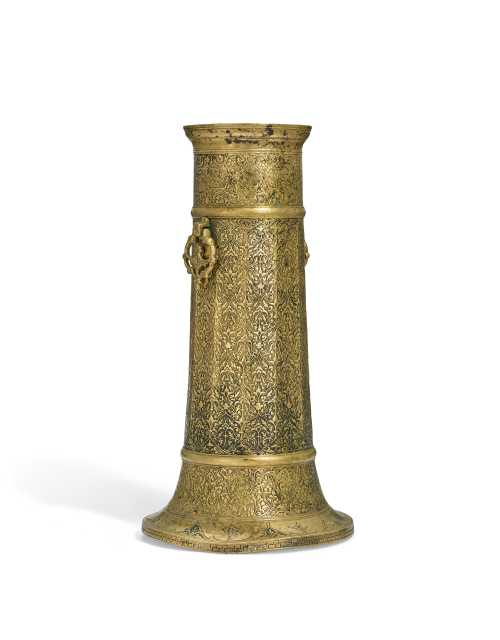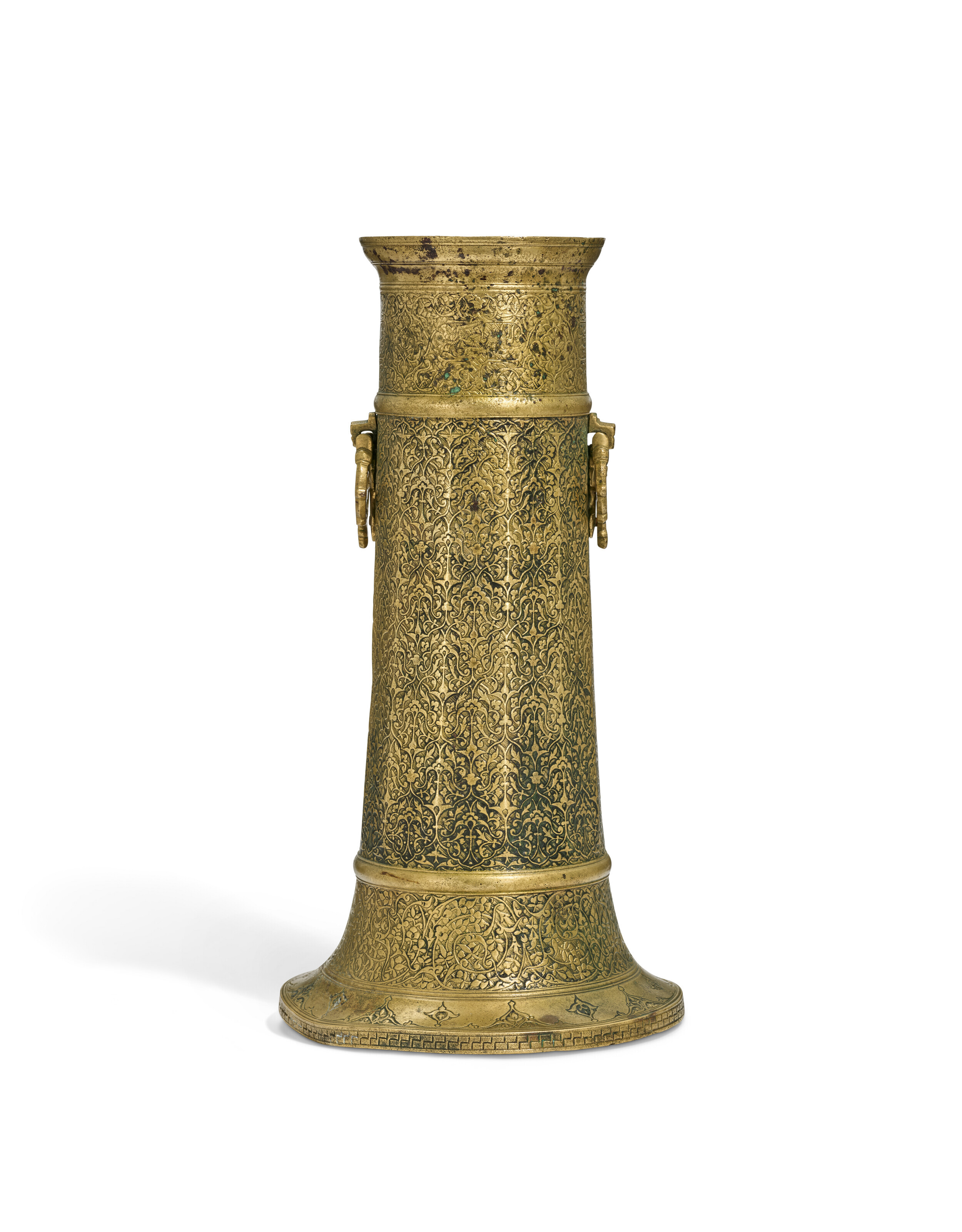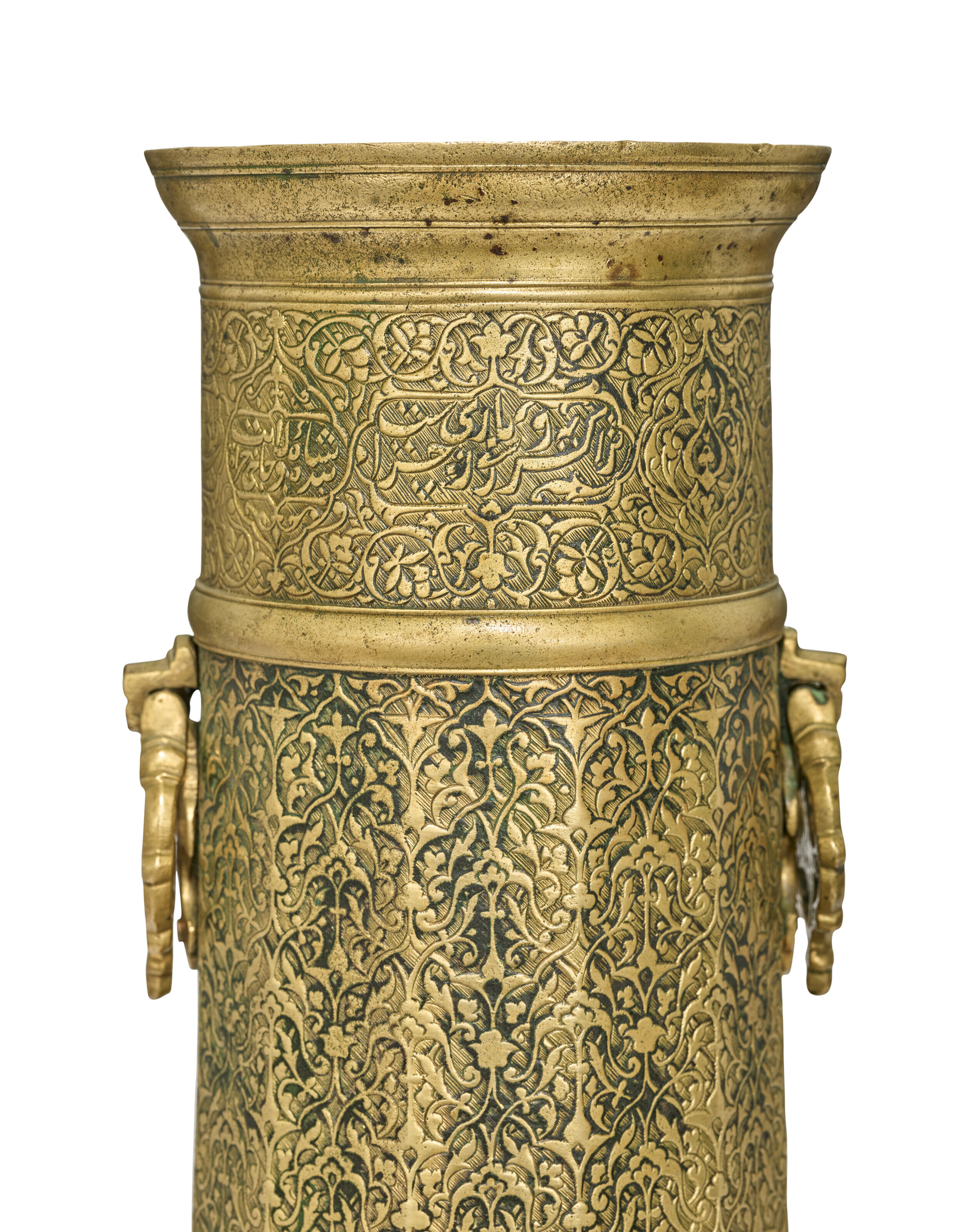- A LARGE SAFAVID BRASS TORCH STAND (MASH'AL)
- Handicrafts and classics, Metal
- 39 cm
- IRAN, SECOND HALF 16TH CENTURY
Of faceted columnar form with flaring foot and everted lip, the main register with finely executed interlaced arabesques and plamette vine on a hatched ground, the upper register with cartouches containing nasta'liq inscriptions, with two openwork handles in the form of palmettes
15 3⁄8in. (39cm.) high
Estimation
£15,000
19,742 USD
-
£20,000
26,323 USD
Unsold
Artwork Description
This example is inscribed with some of the most commonly encountered verses on inscribed Safavid candlesticks. The translation here is that in A.S. Melikian-Chirvani, Islamic Metalwork from the Iranian World, 8-18th centuries, London, 1982, p. 309.
In the main cartouches Persian couplets: ‘I remember one night as my eyes wouldn’t close; I heard the butterfly tell the candle; I am stricken with love, if I burn ‘tis right; But why do you weep, why burn yourself out?’
Owner's inscription: banda-yi shah-i vilayat haji kharrat(?) ‘Slave of the king of trusteeship (i.e. ‘Ali), Haji Kharrat(?)’
The name Kharrat here may be a misspelling of the word kharrat which means a ‘turner’
The mash'al or pillar candlestick/torch stand is a form that appears to have come to Iran from India. The earliest dated example of the form is in the Imam Reza Shrine Museum in Mashhad (Melikian Chirvani, op.cit.,1982, p.263; illustrated in Mark Zebrowski, Gold, Silver and Bronze from Mughal India, London, 1997, pls.130-1, pp.115, 117-8). Its inscriptions make it clear that it was made by the Fakir master Da'ud, foundryman, in Lahore, 14 October 1539, designed by Iskandar b. Shukrullah in India.
The present example is very similar in its decoration and form to one in the Iraq Museum, Baghdad, which bears a date added after the original manufacture, when it was donated to the shrine at Samarra in 1561-2 AD (Melikian-Chirvani, op.cit., pp.264-5 incl. fig.65). Both examples are decorated on a single-hatched ground. This feature was in favour by the reign of Shah Abbas in the last quarter of the 16th century. It is noteworthy to mention that our example has both of its original handles intact, which are often lost on surviving examples.
In the main cartouches Persian couplets: ‘I remember one night as my eyes wouldn’t close; I heard the butterfly tell the candle; I am stricken with love, if I burn ‘tis right; But why do you weep, why burn yourself out?’
Owner's inscription: banda-yi shah-i vilayat haji kharrat(?) ‘Slave of the king of trusteeship (i.e. ‘Ali), Haji Kharrat(?)’
The name Kharrat here may be a misspelling of the word kharrat which means a ‘turner’
The mash'al or pillar candlestick/torch stand is a form that appears to have come to Iran from India. The earliest dated example of the form is in the Imam Reza Shrine Museum in Mashhad (Melikian Chirvani, op.cit.,1982, p.263; illustrated in Mark Zebrowski, Gold, Silver and Bronze from Mughal India, London, 1997, pls.130-1, pp.115, 117-8). Its inscriptions make it clear that it was made by the Fakir master Da'ud, foundryman, in Lahore, 14 October 1539, designed by Iskandar b. Shukrullah in India.
The present example is very similar in its decoration and form to one in the Iraq Museum, Baghdad, which bears a date added after the original manufacture, when it was donated to the shrine at Samarra in 1561-2 AD (Melikian-Chirvani, op.cit., pp.264-5 incl. fig.65). Both examples are decorated on a single-hatched ground. This feature was in favour by the reign of Shah Abbas in the last quarter of the 16th century. It is noteworthy to mention that our example has both of its original handles intact, which are often lost on surviving examples.
More lots by Unknown Artist
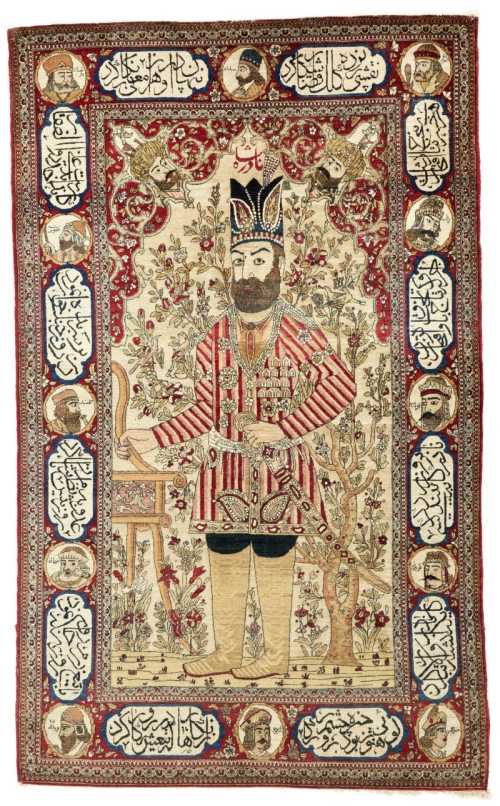
An Isfahan pictorial rug, Central Persia, circa 1910
Estimation
£4,000
5,236 USD
-
£6,000
7,853 USD
Realized Price
£5,670
7,421 USD
13.4%
Sale Date
Sotheby's
-
30 March 2022

A gold medal commemorating the coronation of Muhammad Reza Shah and Queen Farah
Estimation
£100
132 USD
-
£200
263 USD
Realized Price
£160
211 USD
6.667%
Sell at
Sale Date
Rosebery's Auction
-
1 April 2022
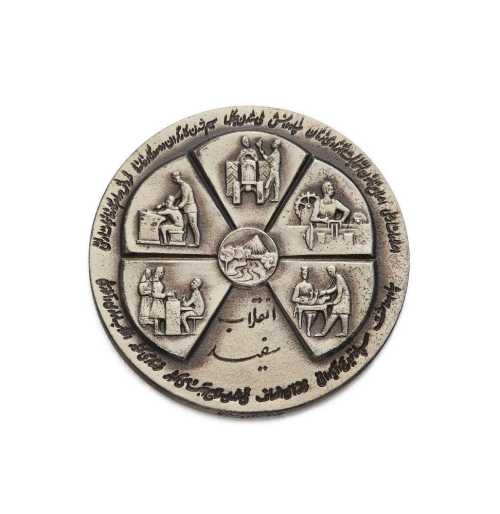
A silver memorial medal of the White Revolution, Muhammad Reza Shah, 1967
Estimation
£200
263 USD
-
£300
395 USD
Realized Price
£170
224 USD
32%
Sell at
Sale Date
Rosebery's Auction
-
1 April 2022
Realized Price
69,501 USD
Min Estimate
36,463 USD
Max Estimate
54,751 USD
Average Artwork Worth
+87.283%
Average Growth of Artwork Worth
Sales Performance Against Estimates
Average & Median Sold Lot Value
2018 - 2022
Performance vs. Estimate
2018 - 2022
Sell-through Rate
2018 - 2022
Similar Artworks
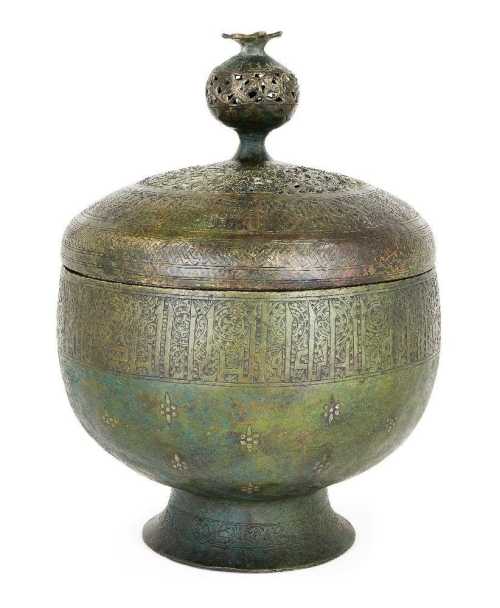
A large inscribed bronze lidded incense burner with silver inlay, Iran, 13th century
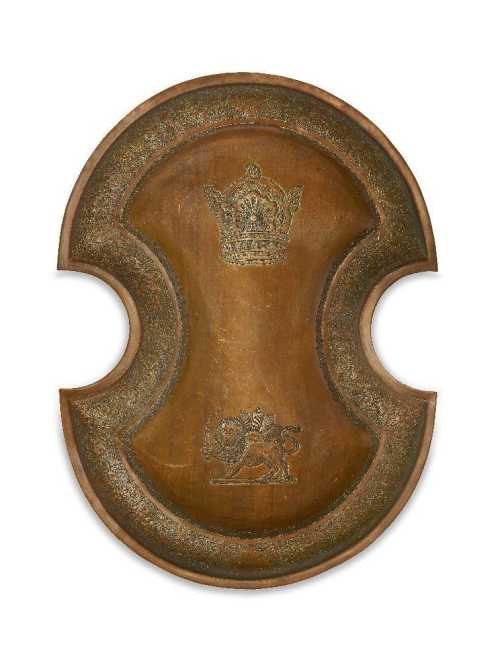
A ceremonial brass engraved shield, Iran, 20th century
Estimation
£600
790 USD
-
£800
1,053 USD
Realized Price
£500
658 USD
28.571%
Sell at
Sale Date
Rosebery's Auction
-
1 April 2022
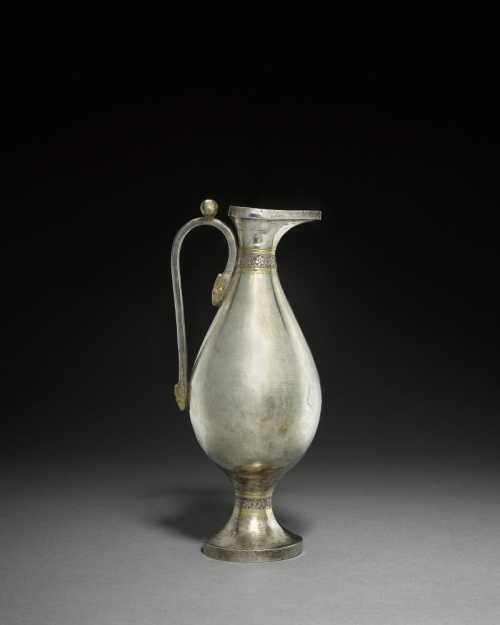
A large Sassanian or early Islamic silver ewer, Persia, 7th-8th century
Estimation
£60,000
78,534 USD
-
£80,000
104,712 USD
Sale Date
Sotheby's
-
30 March 2022
